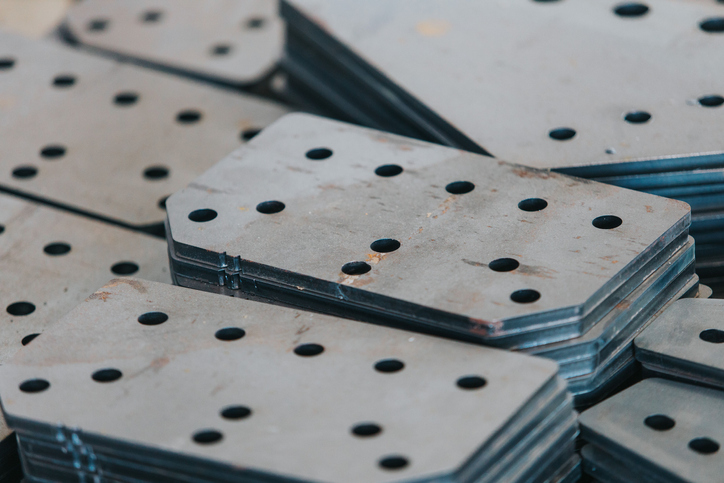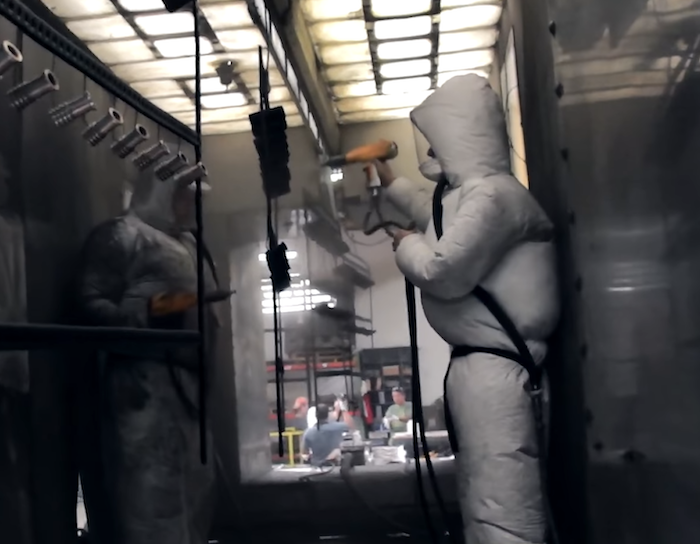Over-deformation or damage on the rivet tip is always a major concern during any riveting process. This is due to the high force requirements of some riveting methods such as press or impact riveting. However, the Orbital Riveting method deforms the rivet at a much lower force (up to 5 times less) than conventional riveting processes. So, it is ideal in applications where aesthetic and material integrity directly affects the performance.
This article reviews what orbital riveting is, a typical process, the design guidelines, and compares orbital riveting vs radial riveting.
What is Orbital Riveting?

It is a low-stress riveting process that joins two or more parts using a rivet. Here, the rivet is placed in the hole, then a tool with orbital motion deforms the rivet collar and forces it to flow into the surrounding material.
Now, let’s discuss how the riveting tool rotates in orbital motion.
The tool (called peen) is attached to the spindle. Although the spindle rotates the tool, the rotation axis of the spindle and tool are 3 to 6° apart. Here, both axes intersect at the work end during rotation and produce the orbital motion.
Furthermore, the orbital path of tool motion reduces the contact area with the rivet head so that less pressure can deform the rivet collar.
The Process of Orbital Riveting
The orbital riveting machine involves the components like base, spindle assembly, and tool holder. Additionally, the integrated control system can control the tool rotation speed, force, and orbital motion. This process includes the following steps.
Positioning of Tool and Contact
First, the orbital riveting tool must be positioned over the exposed end of the rivet. The position should facilitate the correct contact of the tool with the rivet collar. After Positioning, the downward motion of the tool makes contact with the rivet collar.
Rotation and Pressure Application
Next, the riveting machine executes a controlled rotation of the orbital riveting tool with the connected motorized spindle. At the same time, it applies downward pressure on the rivet collar. The pressure deforms the collar uniformly and forms the permanent head of the rivet. Here, the use of appropriate speed and pressure is essential to avoid the over-deformation.
Release of Riveting Tool
Once the rivet is completely formed, the tool goes upward and the joint is inspected for potential defects and failure. If multiple rivets are required, the same process can be repeated for additional joints with proper spacing and alignment between them.
Orbital Riveting vs Radial Riveting

Radial riveting is another cold joining technique that forms the rivet heads by exerting force directly along the radial direction. Similar to orbital riveting, radial riveting uses a lower downward force than the conventional punching method. Thereby maintaining the integrity of the deformed material. While pressing the rivet collar, the tool does not spin, it moves in a radially inward direction and executes the punch for deformation.
So, the main difference between radial and orbital riveting is the tool movement. The orbital tool revolves in an elliptical path around the riveting area, whereas radial riveting involves the inward radiation motion. The following table highlights other differences between orbital vs radial riveting.
| Aspect | Orbital Riveting | Radial Riveting |
| Tool Mechanism | Tool rotates in an elliptical orbit around the rivet. | Radial inward motion towards the rivet. |
| Forming Force | The exerted force is uniformly distributed over the rivet collar. | While radial riveting exerts direct force along the radial direction. |
| Joint Integrity | Uniform deformation for strong, reliable joints. | Precise control for customized joint geometry. |
| Tooling Flexibility | Suitable for various joint configurations. | Ideal for specific forming conditions like in connectors and switches. |
| Applications | Automotive frames, HVAC ducts, and consumer appliances. | Automotive brake pads, electronic enclosures, plumbing fixtures, etc. |
Orbital Rivet Design Guidelines
Achieving the strong and permanently-fused rivet also depends on the many rivet design considerations. However, let’s understand the basics of an orbital rivet before discussing the design rules.
- Head: Deformed part at the top and could be any shape.
- Shank: Cylindrical portion of a rivet.
- Tail: Portion below the shank.
Next, the following are the general orbital rivet designing guidelines or rules:
Orbital Rivet Design Rules
- The nominal diameter (d) of the rivet should not be less than 1.5 times of sheet thickness (t). You can use Unwin’s equation to set the diameter (in mm).
![]()
- The distance between two rivets in the same row (pitch) must not be less than 3 times of rivet diameter. Else, there can be damage to the sheet. Also, the pitch (P) should not exceed twelve times the rivet diameter (d) to ensure the bond from the rivet is tight.
![]()
Here, N represents the number of rivets in a row.
- A proper distance between two consecutive rows (transverse pitch, TP) should be maintained based on the equation.
![]()
Here, θ is the angle of inclination of the orbital riveting tool.
- The minimum distance between the rivet and component edges should be twice the rivet diameter.
- The maximum riveting force (F) that can be applied during the orbital riveting is a function of the rivet material tensile strength.
![]()
- Set the angle between the tool and spindle rotational axis to 3° for the thin sheet and 6° for the thicker one.
- Maintain a 1: 2 ratio between head diameter to shank diameter.
Furthermore, you can take the reference of the following drawing samples in the selection of the head type and its design.



